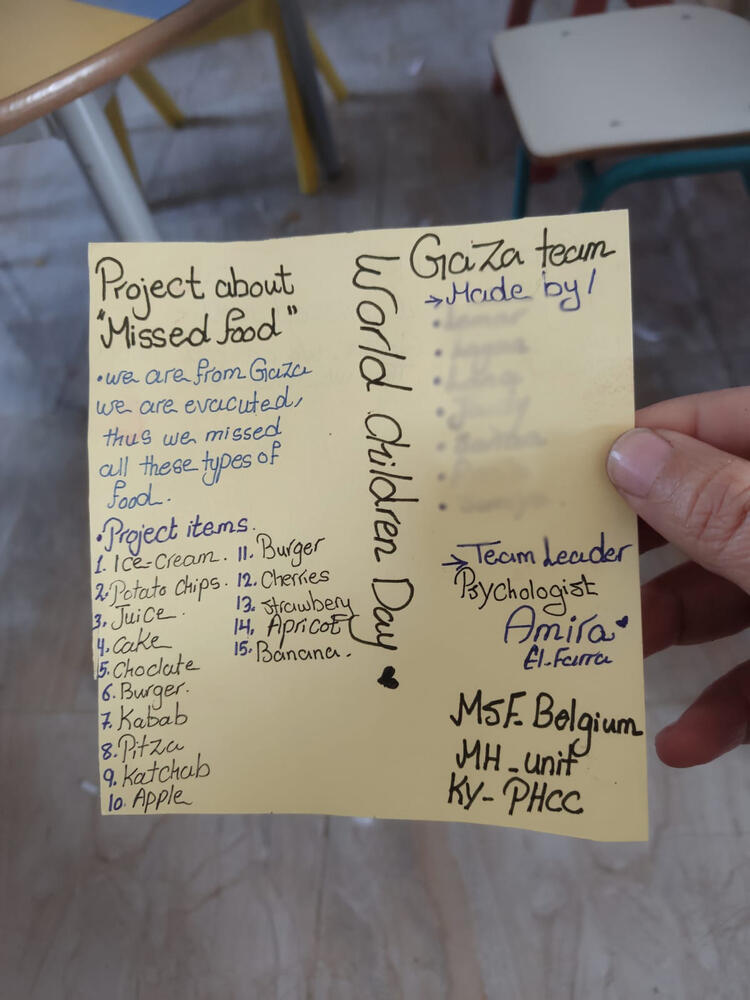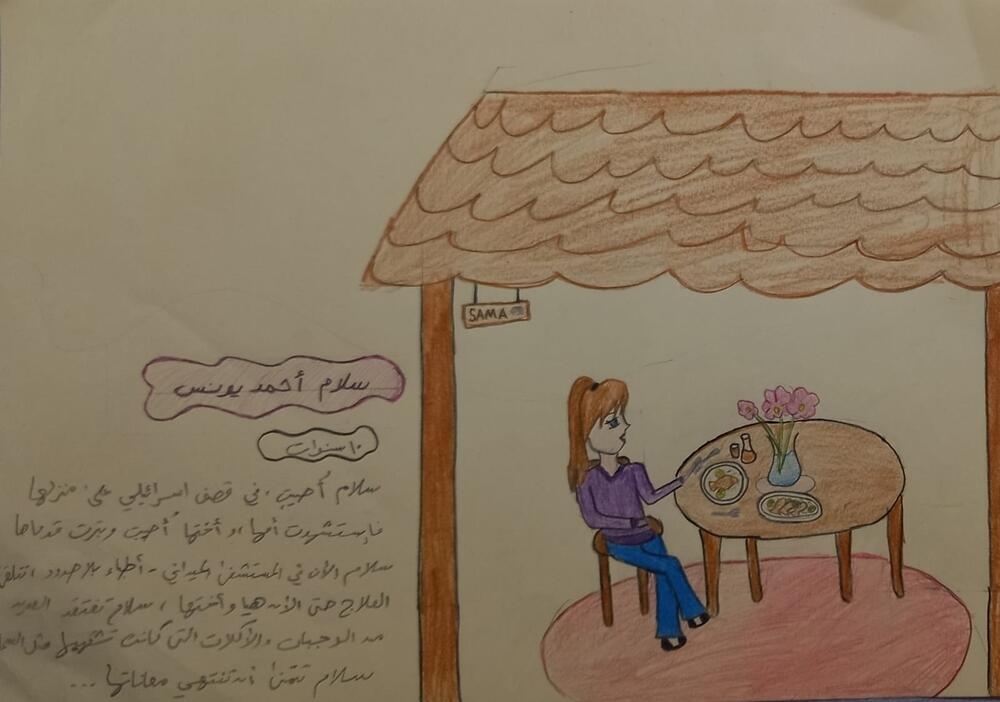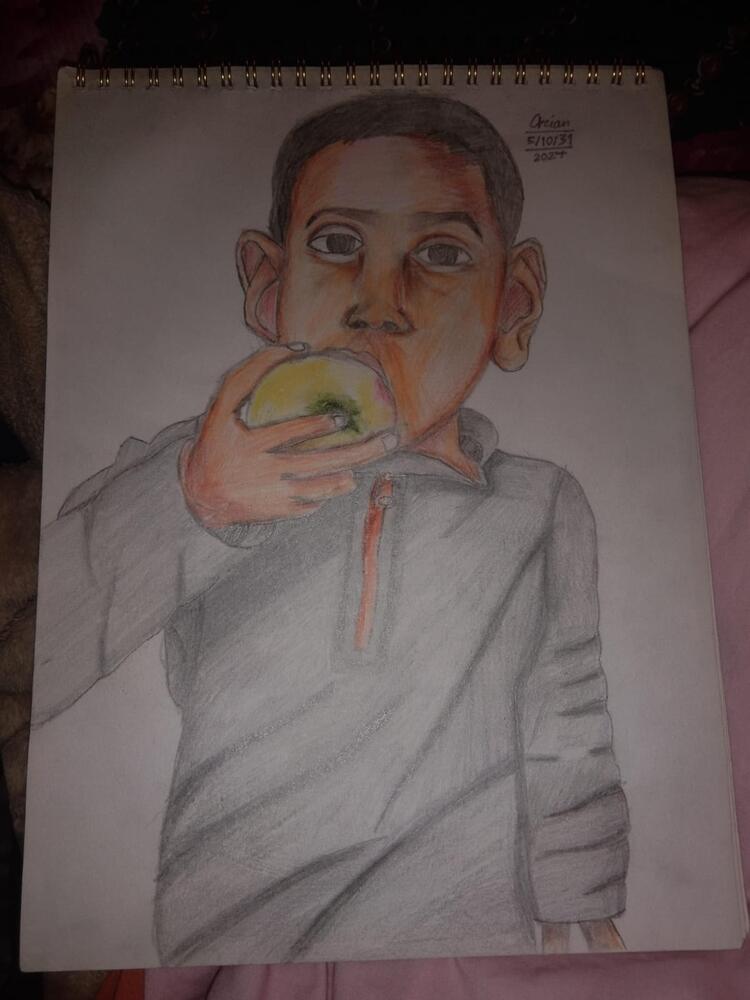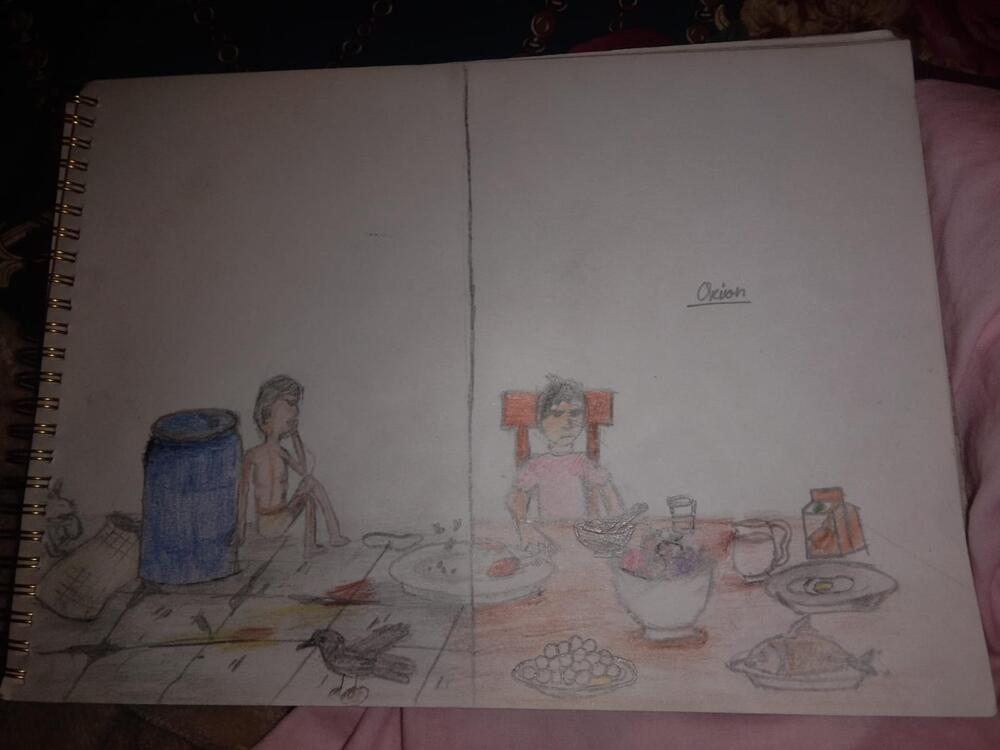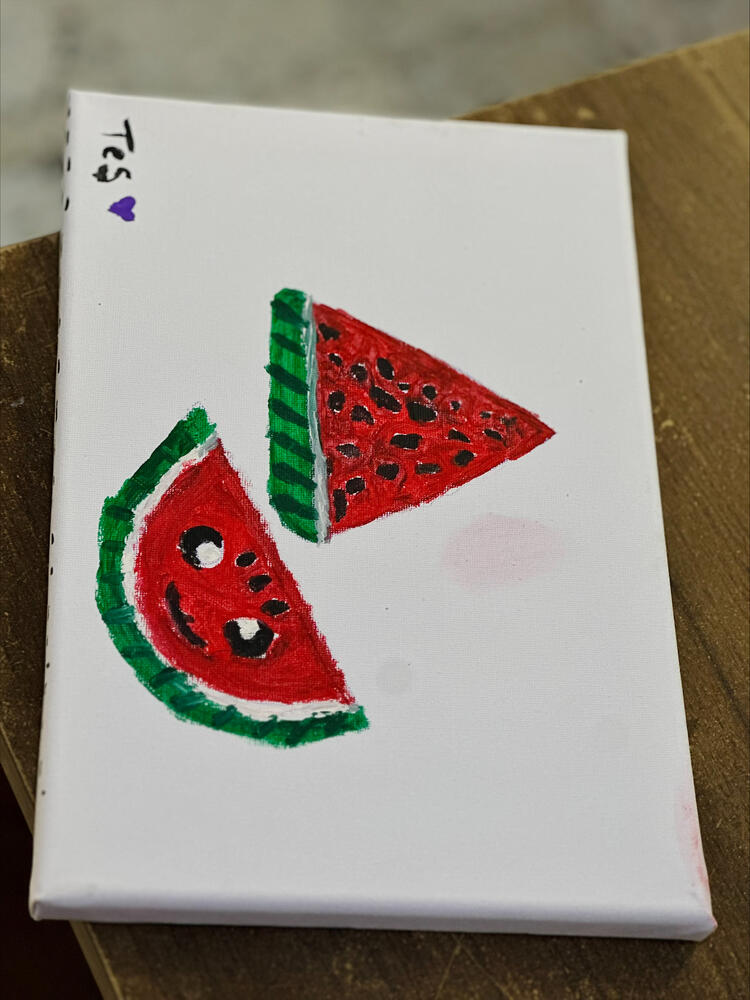World Children's Day 2024: What food means to children
This World Children’s Day, children from MSF projects around the world share their artwork on the theme of food.
Child malnutrition is a devastating global healthcare issue. Unfortunately, Médecins Sans Frontières / Doctors Without Borders (MSF) teams are seeing more and more of it across our projects in places with growing conflict, displacement, natural disasters, and blockages of humanitarian aid.
In many places where we work, the lack of food and access to clean water combines with a lack of healthcare to create a vicious cycle.
Malnutrition plays a part in around half of child deaths globally, and treating malnutrition can be one of the most effective ways to save children’s lives in crises.
Last year, MSF teams treated around half a million children with therapeutic food outside hospitals to prevent them from getting sicker.
This was double the number of children treated two years prior.
A group of girls aged from 11 to 13 years old created this artwork to show foods they really miss and can't get due to the complete blockade imposed on Gaza for many months.
They are attending psychosocial support group sessions at the MSF Gaza emergency project in Khan Younis.
These children have been displaced from their homes and are currently living in tents, experiencing daily shelling and poor living conditions.
This is a drawing by Salma, a 10-year-old girl, whose neighbourhood was targeted in Gaza. Her mother and brother died, her younger sister had to have her lower leg and four fingers amputated, and she and her father were injured and burned. She was admitted to an MSF field hospital and taken care of by a multidisciplinary team. She joined activities in the internally displaced people tents and mental health tent every day.
Conflict and famine
We have seen unusually extreme levels of malnutrition among children in places like Northwest Nigeria, hunger due to conflict and displacement in DRC, and the impact of changes in climate and events such as flooding in Chad.
There is an intimate link between maternal and child malnutrition in places like Yemen, and the economic situation has a clear impact in places like Afghanistan, to name only a few of the places where we have projects.
Worryingly, famine is back and officially declared where we are currently operating in Sudan. We also find ourselves compelled to speak out against blockages of humanitarian aid in places like Sudan and Gaza leading to the risk of starvation.
Unfortunately, when children are left without food and access to healthcare, some are in such poor health by the time we reach them that they require complex care during hospitalisation.
At this stage, these children are some of the sickest we treat. In fact, a child needing treatment in hospital for severe acute malnutrition in a conflict zone has a similar chance of survival as child receiving treatment for leukaemia in a wealthy country.
A staff member from MSF shared his son's drawings. Tanzim is 10 years old. The first drawing is of his younger brother eating an apple and he said about the second drawing: 'I have foods and choices while others have not.'
More than just food
Last year, MSF treated around 160,000 children with severe acute malnutrition that required admission to a hospital facility.
Preventing children from dying of hunger involves more than just food; during malnutrition crises, it is often outbreaks of infectious diseases such as measles which can kill quickly.
Therefore our response often involves emergency interventions such as vaccination campaigns to prevent outbreaks, and water and sanitation programs, as well as primary health care. We also need to focus more work in communities to treat children earlier to prevent deterioration.
All in all, malnutrition is a catastrophe facing many children and families in places in crisis, but with the right interventions at the right time for a child, the devastating impact of malnutrition can be avoided.
MSF and malnutrition
In 2023, we admitted 161,000 severely malnourished children into our inpatient feeding programmes, and 499,500 to outpatient programmes.

